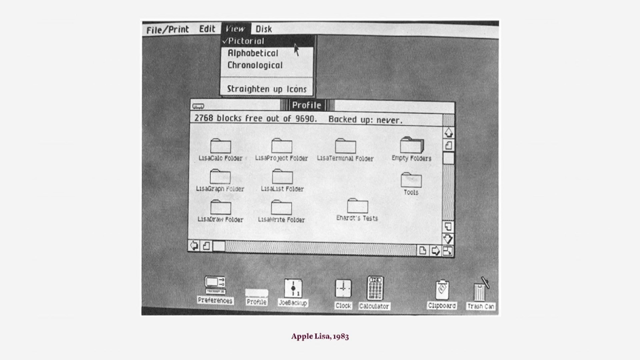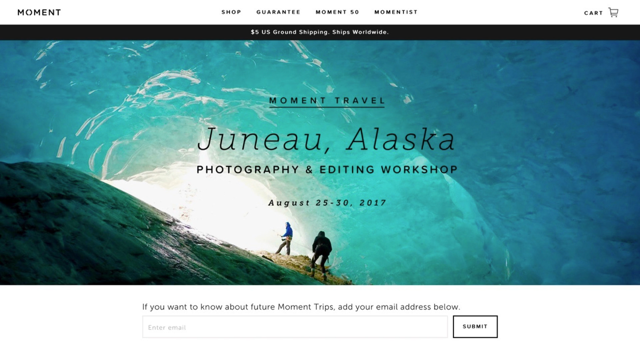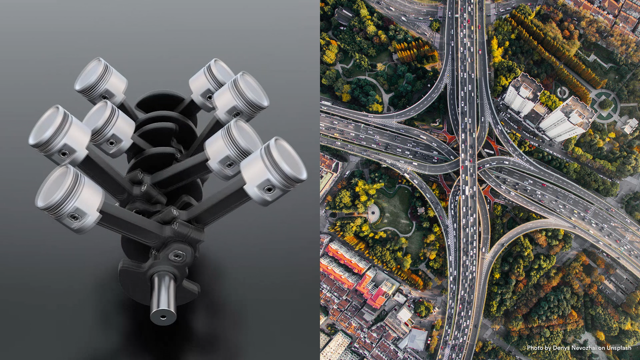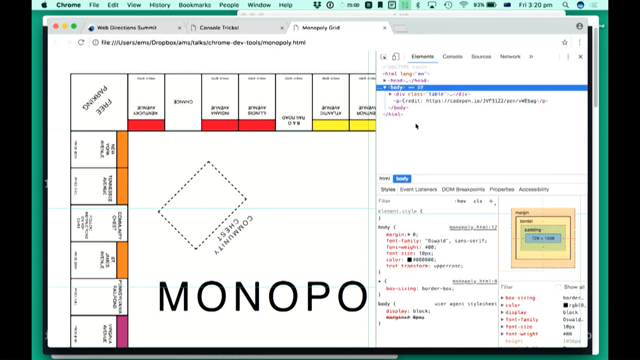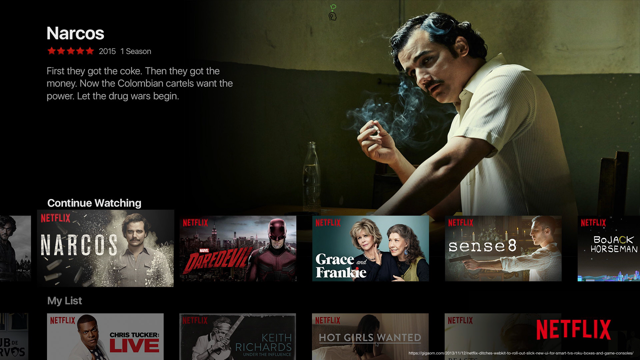Disruptive Design: The designer as an agent of change
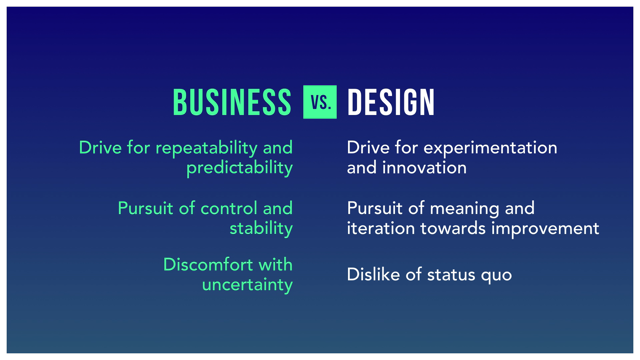
(modern techno music) - Hi everyone, I'm Rona.
I've been a designer for 11 years, six of which in the technology industry.
Today, I'd like to talk about the possibility of product designers in technology companies to really influence change, organisational change, in order to make better products.
So six years ago, I moved from Israel to Brisbane and that was just around the time that I did the transition from graphic design into UX. So during my time in Brisbane, I've had several opportunities to join early-stage startups or new product teams, mostly enterprise software. And as one of the first and sometimes only designer on the team, and after being a graphic designer for the first part of my career, always being invited after the party, after the product was already built, suddenly being involved in a project in its infancy was really thrilling to me.
I imagined I could finally influence how the product will be and what it will do to people.
And after all, touching people's lives, making them feel, react, think, facilitating their boring tasks or automating their jobs or making their lives easier in any way was really why I am a designer.
So I imagined I could really influence the product. And as much as I made sincere efforts and as sincere as my intentions were, I've failed to make an impact.
With very few exceptions, I've made flows and UI concepts that never got built. I created products that were never released. I designed products for a certain user group that then got marketed and sold to another. I delivered user data that was completely ignored by managers or clients or was forbidden to approach our target user group in the first place.
I was scolded by managers for changing things and I was asked to stop talking directly to developers or sometimes stop bothering marketing and sales with too many questions.
I was very frustrated.
I wanted to focus on the product.
But in order to do that, I needed to connect the dots.
I needed to really understand the business goals and vision. I needed to collaborate with engineers and marketing. I needed to know what were our resources and our technological capabilities.
I couldn't understand why it was so hard to do that, why people, managers, were not willing to share their knowledge.
And if they didn't have that knowledge, which is perfectly fine in early-stage projects, why weren't they willing to listen to what I knew, what I learned about users? Didn't they want to know what users want, what they're frustrated about? How are they not willing to discuss the possible implications for the entire business? As if a designer was expected to design a product based on what resonates with users, but in complete isolation from the business goals or the resource available in the company.
It just didn't feel right especially since it was clear that by doing the best design work, listening to users and synthesising that data, there was new knowledge that was created which wasn't just useful for informing interaction patterns, but also useful for defining the product and refining it and figuring out how to market it and which user group to attract first and sometimes even how to monetize.
I felt powerless.
I needed or I thought I needed leaders to listen and consider using this knowledge, this insight, to make better decisions about the product and the business. And time after time, I've failed.
The more I reflected, the more I realised that product designers pose a threat to traditional problem solving.
We bring a messy process with inconsistent and unpredictable outcomes based on variable combination of qualitative data and expert insight in the attempt to solve problems well beyond the colour of the button on a screen. We constantly doubt the status quo.
We ask too many why's.
Now, there was a time when this was a perfectly okay way of developing a product.
A company could rely on a super function or feature for more than a year before competitors caught up, but that's not the reality that we live in today. The technology is not the disruptive force anymore. It's the enabler.
And innovation in humans' experience gives the business the best competitive advantage. And businesses need design precisely because of these differences.
Don't lose hope.
According to thought leaders in business and tech, the business world is adapting.
So people like John Maeda, NEA, IDO, Harvard Business Review, McKinsey, and of course a lot of leaders from very successful companies like Slack, Airbnb, Netflix, Amazon, they're succeeding through focusing on human experience. For example in the academia, the top business schools in the US are putting in design thinking into their curriculum. All top 10 business schools in the US have design clubs formed by students, so that's perhaps an indicator of that trend moving on. In companies, they're hiring more and more designers and the ratio between designer and developer has decreased by 2.5 on average over the last five years. Consultancies and actually Google and Facebook as well are buying a lot of design firms.
So 42 design firms have been bought since 2004, 13 years, half of them only in 2016.
That's a rapid growth.
And at last, design is being valued as money maker, so real direct impact on business is starting to be understood by venture capitals. NEA for example, which is one of the biggest venture capitals, they've created this design survey, the future of design in startups 2016 where they're not just studying the value or the impact of design for businesses, but they're actually encouraging the integration of design early on in the business. The markets are beginning to value design as a strategic function.
So there are some cracks in these walls.
But as always, the future is already here.
It's just not evenly distributed.
And what's coming of age in the Silicon Valley may just be starting to walk in Brisbane, Australia. So today, I'd like to talk about the possibility of us, whoever that is in this room, non-executive, peripheral designers, to make change in the environment in order to deliver, to make and deliver better products.
So some of you like my amazing team in Data61 are actually doing that everyday, but we are also supported by a great leader. Where's Hilary? Thanks Hilary.
We're supported by a great leader who gives us the support that we need to fight the good fight.
And other designers, like I've been in the past, are not so lucky.
Another thing before I move on, I'm not here to give you advice.
This is a work in progress and it's mostly based on my subjective experience so I do want to leave time in the end for a discussion and I'm very looking forward to hearing your experience about this.
So three questions arise from this idea.
First, why should we? It's not our job to change the organisation, maybe HR. Second, what is even possible to change as non-executive designers? How much impact can we actually make? And the third, what is the change that is actually required in order to make an impact, in order to make better products? So the first thing, why should we? Well, what other options do we have? I mean, if the product fails, if the UX sucks, nobody will care that you had a lousy product manager or none at all or that there wasn't a clear strategy in place or that the entire organisation was horribly siloed. If we want to make, if we want to put our names on great products, we have to be willing to tackle barriers outside our role description.
Otherwise, we'll be reduced to service providers, advisors, able to achieve nothing more than just pretty UI. Now, some designers might be satisfied with that. They'll put their beautiful interactions, their beautiful unreleased or unused designs on Dribble and Behance and get a lot of love from the community.
But for designers who are in it to make real impact, that cannot be enough.
Okay, so you can just leave and sometimes that's the only option.
You can skip from one company to the other, hoping the next one will finally be the promised one, the one that transitions into a user-centric design-driven unicorn, good luck.
But consider this.
According to research by McKinsey Global Institute, only a fraction of our economies have been digitised, less than 20%.
Now that happened over 20 years, but the next 80% due to the exponential curve we're on will transform a lot faster.
So that means more and more businesses will be forced to rethink their business model, change their strategy, reshape their offering, if they want to survive.
In a way, transformation of businesses is inevitable. The only question is, are you going to lead or follow? I really believe that part of designers today have a unique position to affect change.
Otherwise, I wouldn't be here.
So how much can we actually change or expect to change and how will we know that it isn't a lost cause? Obviously that's different in different organisations. But I think two statements have to be true about the organisation you're working on for change to even be possible.
The first one is that the company you work for really wants to make successful products.
They have to be market dependent.
Otherwise, any conversation about success or failure is just irrelevant.
The second one is that they have to know that they need design in order to succeed.
Otherwise, they wouldn't have hired you.
And it's not so important how much they value design or in what way they value design.
It's a good starting point to start a change. There's a lot of conversation now around companies transforming themselves into user-centric and design led, for example Pepsi Co, IBM, General Electric, SAP. But these transformations are always described as initiations from executive leaders.
Now, I'm not dismissing how hard that might be. A change from top can be met with a lot of resistance and resentment.
But a change from the bottom up is radical. There is something to learn though.
According to McKinsey again, the key factor of making a successful transformation is maintaining and sustaining the energy through the transformation.
So perhaps that implies or at least gives hope that the incremental and implicit change designers can make from the bottom up would be more effective and therefore a more successful change.
So what change is required? To answer that, I've looked at the most successful companies who are advocates of design and user experience and what they say about their organisation and I've come up with these three key characteristics. So the first one is they have to be user-centric. I said focus/culture 'cause culture is always a big discussion, a semantic discussion about what is culture. Culture is not ping pong tables and casual Fridays and all that.
It's more about how the company values their mission. A lot of companies say they're user-centric because they think they are.
John Hagel from Deloitte came up with an article about how to test companies if they really are user-centric. What he asked is, what is the metrics? What are you actually tracking? Are you tracking customer profitability? Do you know what is the 20% of your customers, which 20% of your customers are making the 80% of your profits? And a lot of companies can't answer that.
So perhaps we can change the culture of the organisation by refocusing the metrics.
Perhaps we can redefine what we're actually tracking, what we're looking at.
And if people look at a specific source of data as a way to validate their performance, then things might change in the culture as well. Here I said that a company has to be collaborative and I was contemplating between collaborative and innovative.
But I think in order to be innovative, you first need to be collaborative so it goes together. I think being collaborative is related to the structure of the company.
And I think that's a very hard thing to change. You can't come up to the CEO and say, "Look, I think the organisational chart is pretty stupid." Or come to a manager and say, "I don't think he should report to you anymore." It won't work.
But I think and I've noticed that, while working in Data61 actually, that you can overcome the structure.
If for example we're making a lot of workshops, design workshops and that brings a lot of people together and getting them familiarised with the design process, that's a way to overcome the structure and become more collaborative.
And the last one and I think this is pretty much the easiest part to change and as Mark demonstrated earlier, there's not too little tools.
There's a lot of tools we can use in order to facilitate the process, even if it's waterfall.
I think that relationships with engineers are key to making good process so this is something that we can easily do. And last, a few questionable advice.
One thing I found really useful was finding a sponsor. If you can find someone in the leadership, in the executive parts who can understand what you're doing and you have chemistry with, they can be a gatekeeper. They can open a lot of doors for you.
One thing I'd like to add that isn't in this list and I thought of when I was listening to Nikola was the retros.
If you're the only designer and you don't have a team to do retros, try to crash on the retros of engineers or if you're brave enough even marketing.
I guess what is design if not changing existing situations into preferred ones.
I would love to hear your thoughts about that. Thank you.
(audience applause) (modern techno music)
Design-driven companies show 10-year returns of a remarkable 219% over that of the S&P 500 Index. Yet the majority of technological companies in 2017 are still behind.
In this talk, Rona will explore the role of the ‘lonely’ designer. The one who’s been hired to make a difference for an engineering-driven organisation. As a designer who’s been in that position over the past 5 years, she will talk about the challenges and opportunities, and share some useful strategies she’s found along the way, to truly make a difference.
Rona moved from Tel Aviv to Brisbane about six years ago; and at the same time changed from being a graphic designer to being a UX designer. She thought she’d finally have more influence over projects, rather than being brought in at the end to polish whatever was already decided. But this wasn’t to be.
Rona found herself creating products that weren’t released; user groups that were then removed; did research that was ignored; scolded by managers for trying to change things; even told to stop talking to developers!
She needed to connect all the dots, to bring together the humans, technology and business. Why weren’t people open to hearing business issues from a designer? If users were telling you important things, why ignore it? This was well beyond defining UX patterns, it was part of defining what the product should even be.
She thought she needed a seat at the table, for leaders to listen. Time after time, this failed. She realised design was seen as a threat to traditional business. People who want stability didn’t like the messy process of design.
But companies can’t rest on traditional methods any more. Startups are embracing design as a competitive advantage. Business in general are starting to realise that design is important.
So how might we (designers) change the environment in which we make and deliver products?
Should we? Of course! If we submit to the status quo, design will be reduced to a service provider. People who stick pretty designs into a process but have no control over it. You can run away; but you’re just chasing that perfect unicorn job where everything is perfect… so you should fight. Change is inevitable. Businesses will transform, they can just choose whether to lead or follow.
What change is feasible? Two things need to be true.
- the company has to want to make successful products
- your organisation has to know they need design to succeed
Transformation is hard – ask big companies trying to do it. It’s hard to sustain the energy. Designers can bring bottom-up change.
What change is required? Companies doing well here have three common qualities:
- User-centric (but they need to actually be user-centric, with real data/metrics and not guesses)
- Collaborative (holistic problem solving/design thinking)
- Efficient (things need to flow, not be too controlled to move)
While Rona has plenty of advice, she really wants to start a conversation. Tell her what you think!







